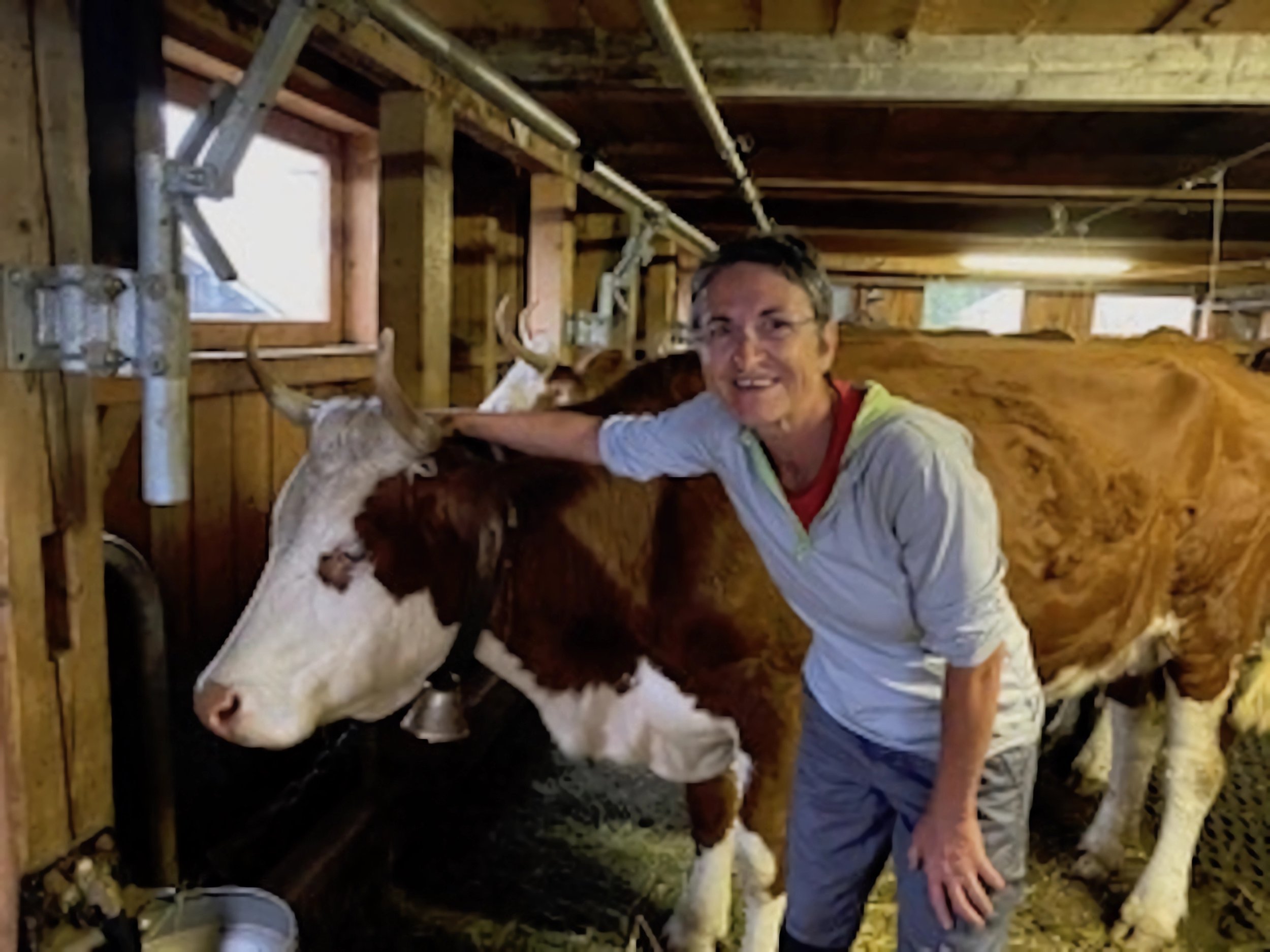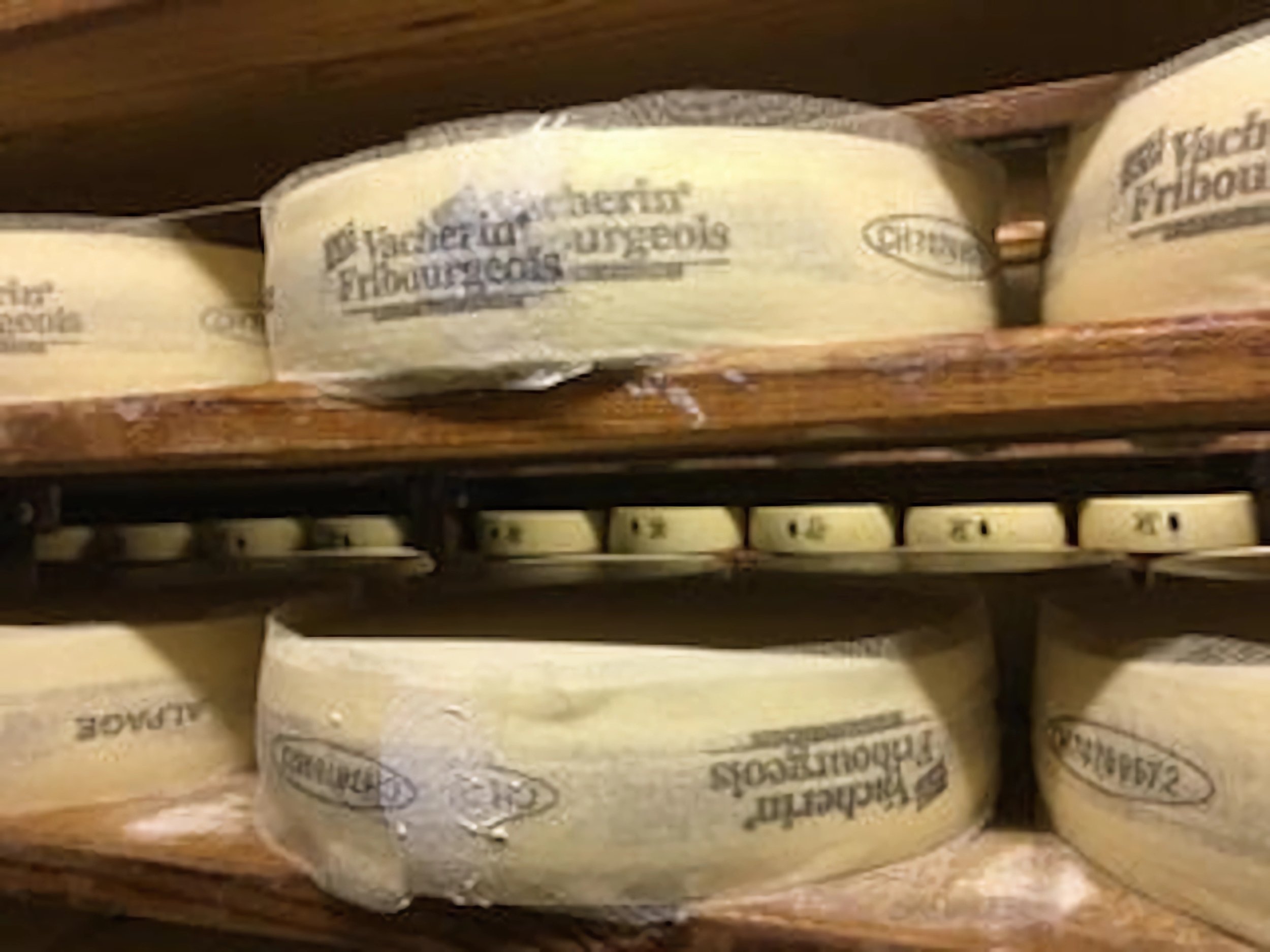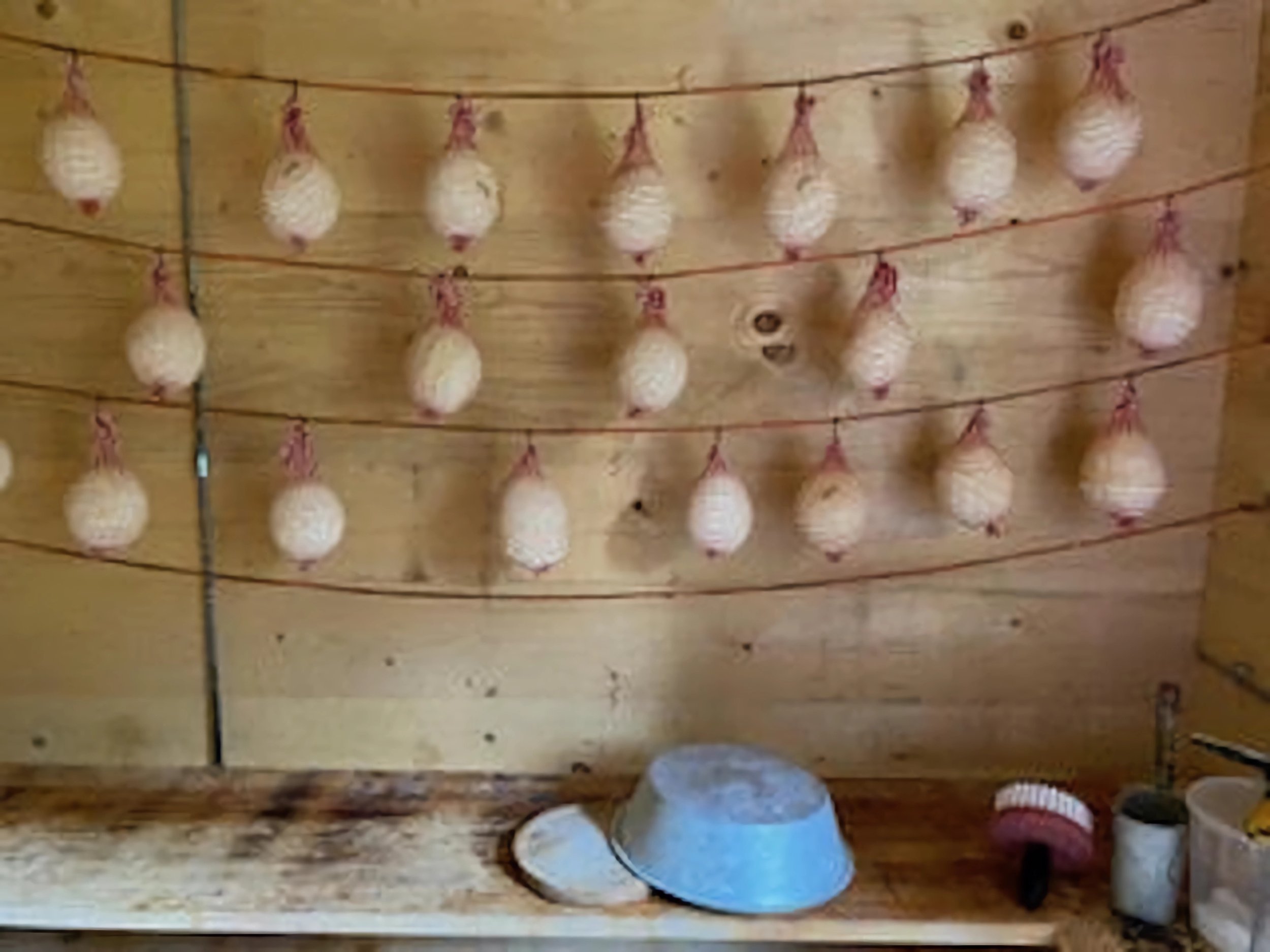How Caroline Hostettler Became a Swiss Cheese Matchmaker with her Adopt-an-Alp Program
Caroline Hostettler
When Caroline Hostettler, a Swiss native, began her U.S.-based cheese importing business Quality Cheese in 1998, she didn’t necessarily have a cheese background, other than having grown up with the good stuff, plus a bit of journalism on the subject. Having relocated to Florida, however, she quickly recognized a serious gap in the availability of quality cheese in the States and was moved to do something about it. “I had this moment in a deli where I heard a woman in front of me ask for Muenster cheese, ‘sliced really thin,’” recalls Hostettler. “And I was like, what did I just hear?” she says, imagining the gooey, washed rind Munster from Alsace that could no more easily be “sliced thin” than could fondue. When she witnessed the thin slices of what passed for Muenster on offer she thought, “Okay, that cannot be it.”
About a year later, armed with a single, 10-kilo wheel each of Rolf Beeler’s AOP Gruyere, Emmenthaler, and Sbrinz, “I set out for two weeks to five cities — New York, San Francisco, Los Angeles, Chicago, and New Orleans — and I had appointments with all the big name chefs,” says Hostettler. “I just presented them with three pieces of really, really good Swiss cheese. And when I came back home, I already had two orders on the fax machine.”
Having begun her Swiss cheese crusade at a time when American artisanal cheese was still in its infancy, Hostettler’s program grew quickly, so she eventually switched from being the distribution mechanism to being a sort-of matchmaker; the point of connection between restaurants or retailers and established distributors that could provide the kind of scale that Hostettler needed. “I’m now with Forever Cheese,” says Hostettler. “They specialized in Spanish, Portuguese, and Italian cheese, but they wanted to add Switzerland because it’s a fundamental area for traditional cheese in Europe.”
Swiss Cheese Matchmaker & Adopt-an-Alp
The Adopt-an-Alp program began in 2013 as a natural extension of Hostettler’s cheese supply business, which pairs U.S. sellers up with specific Swiss makers and cheeses, so that they can better help tell the stories behind the people and places. Sellers who opt in are guaranteed a portion of cheese from their adopted alp, some of which are extremely small in production. “I realized over time that my business was always very connection driven,” says Hostettler. “I have really loyal, more than just business-like relations with all my producers.” The idea for Adopt-an-Alp, then, was to extend this idea of connection to every player in the game, including those on the point-of-sale end, creating mutually beneficial relationships for both producers and sellers. “I thought I should do something that builds these kinds of relationships, and with those relationships comes respect and understanding.”
Transhumance and its cost
Her program also encouraged a better understanding toward the price of artisanal cheese. “Cheeses like these are more expensive than industrial cheeses, and they should be,” says Hostettler, so her desire was also to specifically manifest something that helped to justify the kind of price tag that these cheeses demand. The Alpine practice of transhumance, moving the herd several times yearly to allow for healthy grazing and on-site cheesemaking, costs considerably more than milking animals in a barn and shipping the milk to a factory. “People rave about something and want to support something they find cool,” she says. When consumers are privy to storytelling courtesy of their local cheesemongers, they are more willing to buy.
Alpine Cheeses to Savor
Hostettler is passionate about all of the cheeses in her lineup, but she did call out a few that are extra special.
Vacherin Fribourgeois
Vacherin Fribourgeois
The word “Vacherin” most likely conjures up the suffix “Mont d’Or” for cheese aficionados, but that’s not the only Vacherin on the block. Vacherin Fribourgeois, a rare and pungent Alpine, is the original Swiss fondue cheese, and one that is only made by a small handful of cheesemakers. Smaller and softer than what we traditionally think of as the major Alpine cheeses, with a distinct, unpalatable washed rind and strong aroma, the nutty and nearly chocolatey paste rewards those who know to seek it out.
“The Vacherin Fribourgeois that we have is outstanding,” says Hostettler, “ It’s really like the cheese used to be centuries ago. It’s not that easy to sell in this country because of the smell and everything. It’s a bit hard to understand, but for those who know how it is supposed to be are extremely happy with it.”
Botchen-Chnubel
A form of Alpkäse, the Botchen-Chnubel is named after its Alp, which also appropriately means “little bread roll.” This petite cheese is another favorite of Hostettler’s: “It’s just one kilo that he ages in a ham net hanging from the ceiling,” she says. “And because the cheese is so small and ages fast, it’s almost like a firm yogurt. It has that beautiful acidity, and when you bite into this cheese you think of a picnic on a sunny day, just something very serene and positive.”
Berner Hobelkäse
Berner Hobelkäse
Berner Hobelkäse, which literally means “planing cheese,” begins its life as Berner Alpkäse, a firm, full-fat, spicy cheese made from raw cow’s milk. “I’m also a big fan of the Berner Oberlander Hobelkäse,” says Hostettler. “The cheese changes its name after three years of age, when you start shaving it into paper thin little rolls.”
Creativity in Cheese Marketing
Cheesemaker and goats
Through Adopt-an-Alp, Hostettler has also incentivized U.S. sellers to tell their Alpine cheese stories in creative ways, frequently offering programs that award people with trips to see their adopted alps for especially ingenious marketing schemes. “There are amazing efforts that have been taken,” says Hostettler, including cross partnerships with local libraries for readings of Alpine stories such as “Heidi,” to one store creating a raffle for a cheese tattoo with another local business. “We had one tiny store in Washington State that Co Op and they had one 6-case cheese cooler, and that’s it. They built a tall paper mache mountain, and put it just in front of that case,” says Hostettler. “People could not get to the case without asking,” she says, which opened up the dialogue, and encouraged some (light) mountain climbing.
On the reverse, Hostettler also realized she had to flip the script, not only sharing photos and blurbs from the cheesemakers with the American sellers, but also giving feedback and telling stories to the cheesemakers as well. “You have to show the farmers what people around here do, and how they react,” she says. “So now I get photos from displays, or from tastings, or all these events that the stores do when they receive their cheese. And the farmers are stoked. They are so happy.”






